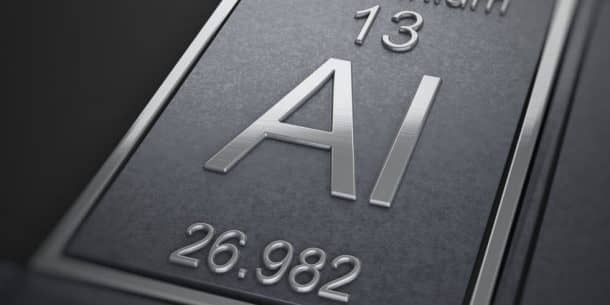Aluminum is a soft, malleable, and one of the lightest metals with a ton of applications in our daily lives. Despite being super light, if you drop an aluminium spoon or a knife in water, it is bound to sink to the bottom. If we can get this multipurpose metal to become even lighter, it could open doorways to a million more applications. Researchers have managed to achieve just that!

A team of researchers from the US and Russia came together to create a new crystalline form of aluminum with such a low density that it can float on the surface of the water. Alexander Boldyrev, the chemist and a professor at the Department of Chemistry and Biochemistry of Utah State University, explained the structure of the material,
“My colleagues’ approach to this challenge was very innovative. They started with a known crystal lattice, in this case, diamond, and substituted every carbon atom with an aluminum tetrahedron.”
The crystalline structure called supertetrahedral aluminum has a density of only 0.61 grams per cubic centimeter that is even less than one-fourth of the regular aluminum; 2.7 grams per cubic centimeter. It even competes lithium that is the lightest natural metal with a density of 0.5 grams per cubic centimeter. It is even lighter than sodium (0.97 gm/cm cubed) and potassium (0.86 gm/cm cubed). On the brighter side, it is not explosive like all of these highly reactive metals.
Almost all industries make use of aluminium in one way or the other. It is one of the most common household metals that goes into everything from utensils to disposable foil. It is the major component of airplanes, vehicles, and spacecraft. If aluminium becomes lighter than it already is, it will make a huge difference in pretty much all of the industries. Lighter metals would reduce the payloads for spaceflight, and even save fuel costs for regular vehicles. The same conductive effect will be achieved by using lesser quantity of the metal, thereby saving a lot of wiring costs.
Before anyone gets overexcited, Boldyrev says that since the team has not produced any of the crystalline aluminium, we should not jump to its benefits.
“Spaceflight, medicine, wiring and more lightweight, more fuel-efficient automotive parts are some applications that come to mind. Of course, it’s very early to speculate about how this material could be used. There are many unknowns. For one thing, we don’t know anything about its strength,” he added.
Back in 2012, some researchers created a copper compound cluster that was also a supertetrahedral material. The research opens up new doors for the future of material design engineering.
“An amazing aspect of this research is the approach: using a known structure to design a new material. This approach paves the way for future discoveries,” says Boldyrev.
Science holds a bright future indeed!


